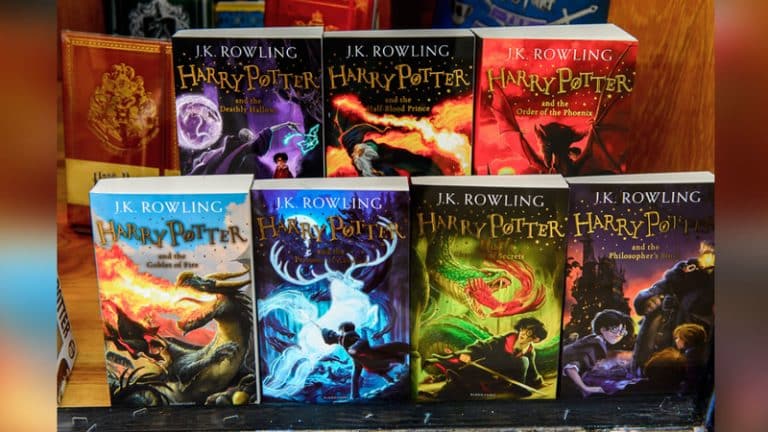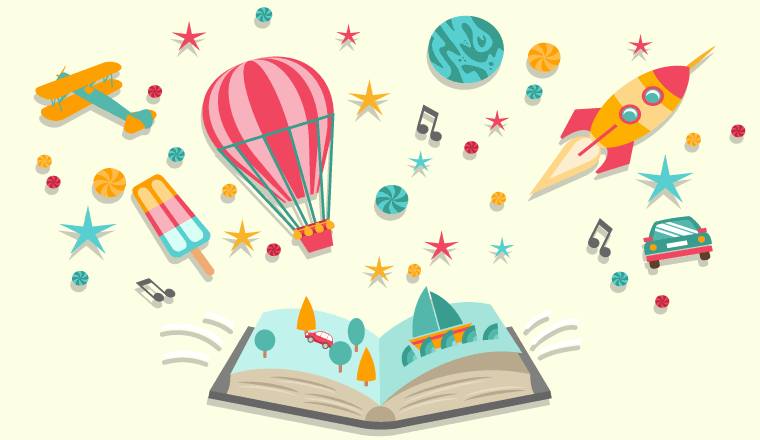Have you ever thought about what makes books like ‘The hitchhiker’s guide to the galaxy’ and ‘Harry Potter’ so special? It’s mind-blowing visual storytelling. While the main story is the crucks of any book, the ability to paint a mental image of the story is what makes storytelling a class apart.
When you read Harry Potter and read the parts of the book that describe the moving staircases or the game of Quidditch — your brain can visually see a beautiful scene of all of these mystical events. While the movies have refreshed a version of this — it’s impossible without the knack for visual detailing.
Contents
Why Is It Necessary?
When we think of what makes a good story, we look at technical aspects like an excellent conflict, an interesting character, or a string of suspense. What we often fail to do is see it from the point of view of the reader. Your story must resonate with the readers to ensure they can clearly understand what is going on.
For instance, we often read books by authors who are from foreign countries. While they have their stories placed in a backdrop that is unfamiliar to us, we still feel connected to the story.
They are able to describe the smaller details that could help print a virtual map of the scene in our minds. The same is true for new characters in a story.
This is an important skill to hone as a writer for many reasons—the more visual your writing, the better the readability. The moment a reader is unable to comprehend a section, they will tend to tune it out.
Visual images act as a catalyst to popularize the book. The reader should feel like one of the characters of the book, watching the story unfold. This is a quality that you will notice in writers who spend hours writing on screenwriting software.
The ability to visualize a story also makes your book a fast-paced, page-turner. The most important rule of storytelling that is thrown around is “show, don’t tell.” This rule means that as a writer, you are expected to give details of the scene without spoon-feeding the reader the whole story.
For example, the saying would be, “I walked down the finished farm road in autumn.” The same can be shown in a more visual presentation “The yellow and orange leaves lay by the side of the farm road.” The visual representation of the yellow and orange leaves is a clear indicator that it is autumn. The latter will give the reader more mental triggers than the first sentence.
How Does One Enable Visualization In Story?
Step one to creating visualization is not chasing it. It is not a quality that can be acquired by using the best book-writing software or the right tools. They come with many rounds of revision and re-reading.
They also take years of writing to master. While some writers have a gifted mind for this, it’s not a quality that cannot be learned.
One good exercise is to highlight or mark sections of other books that you find visually impactful. Simply identifying these parts in other books helps your brain better break down the science behind them. You will be able to notice better what these authors are doing right, and what elements trigger a mental image for you.
Reading fantasy or horror is another excellent exercise. These are books that rely wholly on the ability to make your readers visualize a non-existent entity. You can almost imagine the eerie details and more unusual quirks of the characters while you read any of the paranormal books by Stephen King.
If you want to add a sense of visual pop to your books, you can revisit the scenes in your writing. Do them one scene, or one section at a time. Place yourself in the point-of-view of the protagonist and see what details are missing to make the story more wholesome.
It’s often hard to find an inaccuracy in your own writing. This is not from narcissism — it is an absolute inability. If you were able to see these mistakes in the first place, you would never make them.
This is why an editor or a friend who can read them for you would be beneficial. They will be able to give your story a fresh pair of eyes.
Ask your friends to mark any points in the story that they fail to understand. Or fail to visualize. Ask them what details are missing and what aspects threw them off the storyline or make the plot dull.
These inputs will open your eyes to new possibilities that you might not have seen. It might also help you find plot holes or discrepancies in the linearity.
In Conclusion,
One of the biggest mistakes you can do is editing your work the day you finish it. It is good; it’s to shelf this book the moment you finish it. This helps you detach from the book.
When you spend too much time around the same premise, your mind often tends to keep the ideas in the same funnel. By taking time away from the draft, you will allow for better attention to detail.
Watching movies is a surprisingly good hack to understand visualization better. This is especially true for movies that are based on books. This gives your mind a before-and-after comparison to one of the ways a story can be expressed.
If you read the book first, write down small critical elements from the book based on how you visualize them. Then watch the movie and see how close you were to their version of it.
If you notice a lack of visual traits in your story, it’s not a cause for worry. Over time they become very organic and hard to miss. There is nothing that cannot be perfected with the right amount of practice and patience.


